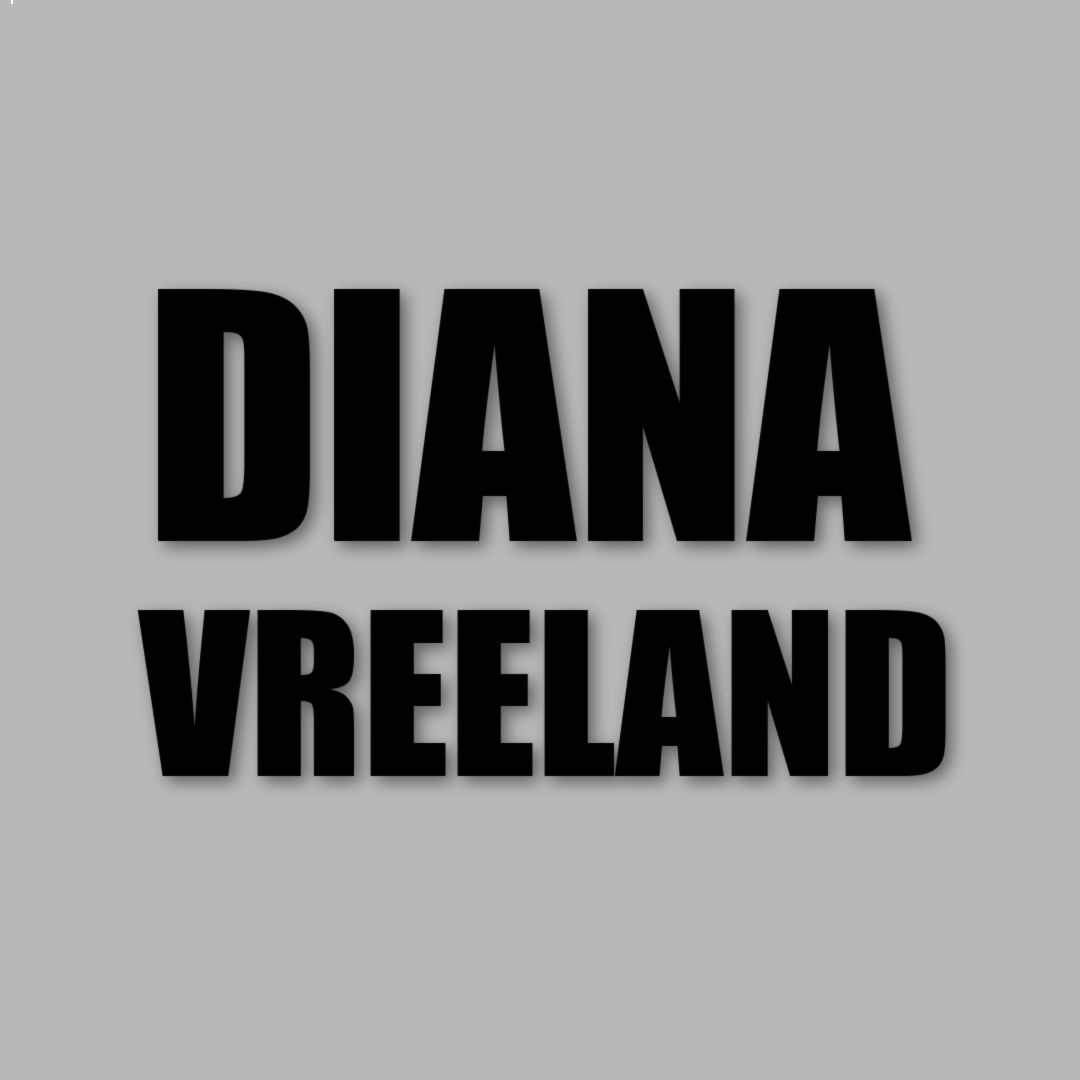We just love our True Fashionista cultural icons. Let’s see what Wikipedia knows first about Diana Vreeland, famously known, among other things for her fondness for the color red. A creative force at both Harper's Bazaar and Vogue, Vreeland built a reputation as an accurate forecaster of The Next Big Thing for a good chunk of the 20th century before capping her career as special consultant to the Costume Institute of the Metropolitan Museum of Art.
Oh, but there’s so much more to explore about Ms. Vreeland, who was born Diana Dalziel (a Scottish name pronounced Dee-el) September 29, 1903 in Paris. Her family moved to New York in 1904, where they lived a socially prominent lifestyle. Diana was a vivacious child who enjoyed fantasy and dancing, and also possessed a flair for dressing up. In 1924, she married Thomas Reed Vreeland, a well-to-do banker. The couple moved to London in 1929, where Diana (reportedly pronounced Dee-Anna) began her fabo fashion career by opening a lingerie shop. Coupled with her frequent trips to Paris and her “in-crowd” status, she was often the subject of society pages in the very magazines where she would end up working for the bulk of her career.
In 1935, the Vreelands moved back to New York, and two years later Diana began doing fashion editorial work at Harper’s Bazaar before ascending to fashion editor in 1939. This was her domain for over 20 years before going across the proverbial street to Vogue in 1962. During her editorial run, as Amy Fine Collins shares for Vanity Fair, Vreeland not only knew exactly what she wanted, but also how to pull the best out of those around her to achieve it.
Her expert manipulation of underlings into giving her more than they even knew they possessed was the stuff of legend. Vreeland could identify the best in people, endow them with the feeling of being “chosen”, then pile on the work while simultaneously developing their talent. Her extensive line of successful protégés, including sportswear designer Carolyn Schnurer (Harper’s) to Grace Mirabella (her Harper’s Bazaar replacement) and Polly Mellen (Vogue), speak of this designation as somewhat of a religious experience. Talley said for Vanity Fair, “Once she decided she saw something in me, I could do no wrong.” Mirabella concurs, “We all had the feeling that we’d die for her.”
As Love to Know tells us, Vreeland was also famous at Harper’s for the column she started in 1936 entitled, “Why Don’t You?”, which encapsulated her personal belief in the ability of fashion to transform women by offering such extravagant and fantastic suggestions to her readers as "Why don't you … Turn your child into an Infanta for a fancy dress party?" (August 1936) and "Why don't you own, as does one extremely smart woman, twelve diamond roses of all sizes?" (January 1937)
Schnurer adds, “As an editor she was always so color-right, fashion-right, silhouette-right. She told me to cut bathing-suit legs short in the front and rounded at the side to elongate the gorgeous American leg. She was the first one to insist I make a bikini. They had not really been seen outside of France and Italy. She kept telling me, ‘Less of it! Less of it!’”
Condé Nast wanted more of Vreeland, hiring her in 1962 as an associate editor, followed by a swift promotion to Editor in Chief less than a year later. “She was my most difficult editor, but there was never any fashion at Vogue until Diana Vreeland arrived,” says Kay Hays, who worked as shoe editor under several Vogue bosses including Mirabella and Anna Wintour.
Set against the True Fashionista background of the turbulent sixties and early seventies, Vreeland’s over the top imagination was in perfect harmony with the wild abandon of the era. From rock ‘n roll to Warhol’s Factory scene, it all, as Vreeland was fond of saying, thrilled her to madness. Former Halston Creative Director Joe Eula remembers how she once coolly ignored a vial of cocaine that rolled out of his pocket during a meeting in her scarlet-walled, leopard carpeted office—only to suggest as he left to wear pockets that buttoned. Vreeland’s Vogue pushed boundaries continually. No ideas were too crazy, no expenditures too lavish, no fantasies too outrageous for her vision. “Give them a little something!” was the rallying call with which Vreeland would challenge her staff.
Vreeland liked people who weren’t scared of her. However, it was a nightmare working for her. Her colleagues and competitors intuitively recognized that at the center of this outrageous whirlwind lay a rigorous, controlling eye. One look at her size zero physique, her meticulously arranged desk, her regimented routines (every day a peanut butter sandwich and a shot of scotch for lunch. No really.), or her standard office uniform of dark cashmere separates revealed the consummate professional behind the outer party girl.
Following her departure from Vogue and a four-month sabbatical abroad, the Metropolitan Museum appointed Vreeland special consultant to the Costume Institute, which was then an obscure division of the Met frequented mostly by fashion designers and scholars. The Institute’s directors didn’t believe in it, until they heard that a group of people had raised the money for her salary for two years.
That group of influential and wealthy socialites, whom Vreeland had previously advised on both style and personal matters in the past, included such luminaries as Jane Engelhard, Babe Paley, and Jacqueline Onassis. Surpassing everyone’s expectations, Vreeland’s creative spirit shone bright once again, producing exhibits over 14 years as one of the Institute’s top curators. Starting with her 1973 Balenciaga exhibition, Vreeland brought the Institute to life. Its director at the time, Thomas Hoving, says, “We had to keep the shows for nine months, there was such heavy traffic—close to a million for ‘Romantic and Glamorous Hollywood Design.’
Vreeland’s style attracted a new, young, trendy in-crowd, culled mostly from the Halston and Factory crowds who saw in her a compelling combination of Next Big Thing and dinosaur. While frenetically keeping abreast of every pop culture novelty, from Deep Throat to Studio 54, she also clung to her arcane coquette habits left over from days gone by, like sleeping on a black satin pillow to preserve her hair dye, popping “pony pills” (megadose vitamins) and speaking in bootlegger slang.
Around 1985, Vreeland began withdrawing from public life as old age reared its undeniable head. She stopped dying her hair, retreated to her home and reestablished connections with family. Her children and grandchildren especially got quality time by her bedside until her passing in 1989.
In 2011 the Metropolitan Museum’s Costume Institute presented the Diana Vreeland exhibit to display a selection of keepsakes like clothing, pictures, objects—pertaining to the Cult of Diana. Says grandson Alexander Vreeland, “My grandmother is no longer a person. She’s an adjective.”
We can relate. Stop into our Diana Vreeland Naples, Florida store for some True Fashionista designer finds for both your wardrobe and home at a fraction of the original price, or shop our continually updated collection online.





























